There is no doubt about the fact that a sizeable chunk of the world population has been touched by the Internet and that people have now gone online for most things like shopping, medical help and even raising funds for start-ups. While this is definitely a positive step in terms of technology advancement, this shift to the online world has done reasonable damage to the offline retail industry comprising of huge retail chains like Wal-Mart (WMT), Target Corp (TGT) and Costco (COST). However, Costco has been above the rest in terms of delivering consistent results because of its robust membership model, high employee morale and effective cost management.
Reasonable Numbers
For the second quarter of 2014, Costco's earnings slid to $1.05 per share from $1.24 per share, a year ago. Though the company's last year earnings were impacted by a $52 million or $0.14 per share tax benefit, the current earnings are still a few notches below the prior-year period. Sales were up by approximately 6% in quarter two on an overall basis and 3% on a comp basis. As management pointed out, the four-week period between Thanksgiving and Christmas saw weak sales as compared to the previous year mainly because of a snowy weather prevalent at that time.
The Might of e-Commerce
Besides the large collection of items that online websites boast, these e-commerce websites have also introduced the customers to a plethora of discount deals and other membership benefits. As such, customers have become more focused on the value-for-money aspect with regard to their purchases and scouting for the best deals. Costco is a fantastic alternative in brick-and-mortar retail stores, whose membership model bestows privileged benefits to customers at reasonable cost and thus, matches up with the might of e-retailing.
Costco's Membership Model Is a Hit
The data for the second quarter shows the effectiveness of Costco's membership model. New membership signups in the second quarter company-wide were up 13% year over year while the overall membership fees were up by 4% yyear over year to $550 million. Also, the paid executive memberships stood to the right of 14 million in the quarter, approximately an increase of 2,00,000 since the end of first quarter; it is significant to note that this type of membership represents approximately two-thirds of Costco's total sales.
I have given all these numbers to highlight quite an important point that a major chunk of this retail giant's revenue comes from membership fees as compared to product sales, unlike other chains like Wal-Mart and Target Corp. This is one of the reasons that Costco's quarterly result is notches better than Wal-Mart, which reported a decline of 0.4% in same-store sales for 14 weeks ended on Jan. 31. The reason that Wal-Mart's earnings beat consensus estimates by a whisker was the fact that analysts had lowered their expectations after the announcement of guidance warnings made by the company.
Wal-Mart's Dividend Announcement Was a Shocker
Wal-Mart's performance was affected by similar factors as Costco including harsh weather conditions, fluctuation in currency and strengthening presence of online retail enterprises. However, the event that actually jolted the investor community was an increase of a mere 2% in annual dividend, a considerable aberration from Wal-Mart's strong dividend history. As per past data, this dividend increase is the smallest in the last 10 years and could imply a negative foreseeable future.
This being said, it should also be factored in that brick and mortar retailers faced certain generic unfavorable conditions in December and this poor performance could be a one-off case. It is actually impressive to see that Wal-Mart is at least stepping up its game in e-retailing, which is under its control and can be leveraged. For instance, this report points out the company's plans to push for an e-retailing business model in India similar to that of Amazon (AMZN) and eBay (EBAY). This is a significant step from the company considering the fact that it failed to establish brick and mortar stores in the country after hanging there for almost six years.
Final Words
It is evidently clear that Costco's strength revolves around it membership model and the ability to provide a no-frills shopping experience to its privileged members at a low price. Additionally, the retail giant is making strides in the organic foods business, a growing segment of the grocery industry. As Richard Galanti pointed out in the earnings call: The organic business is big and growing fast and will provide a robust revenue stream for the future.
To sum it up, Costco is an ideal candidate for investment for the following reasons:
1. The threatening growth of online retail business has already done good damage to the brick-and-mortar stores. However, Costco's strong membership model has enabled it to build and sustain its revenues, making it the best pick among all the retail chains.
2. For the quarter, comparable store sales grew by around 3%, in spite of a weak economy and unfavorable business conditions. The primary reason for this growth is the huge discount, i.e. around 55% that members can avail of by purchasing from warehouse clubs. Thus, low prices and commendable quality have been consistently upheld by the company through its warehouse purchase model, and it is going to be a key element of Costco's future growth.
| Currently 0.00/512345 Rating: 0.0/5 (0 votes) |
More GuruFocus Links
| Latest Guru Picks | Value Strategies |
| Warren Buffett Portfolio | Ben Graham Net-Net |
| Real Time Picks | Buffett-Munger Screener |
| Aggregated Portfolio | Undervalued Predictable |
| ETFs, Options | Low P/S Companies |
| Insider Trends | 10-Year Financials |
| 52-Week Lows | Interactive Charts |
| Model Portfolios | DCF Calculator |
RSS Feed  | Monthly Newsletters |
| The All-In-One Screener | Portfolio Tracking Tool |
 MORE GURUFOCUS LINKS
MORE GURUFOCUS LINKS | Latest Guru Picks | Value Strategies |
| Warren Buffett Portfolio | Ben Graham Net-Net |
| Real Time Picks | Buffett-Munger Screener |
| Aggregated Portfolio | Undervalued Predictable |
| ETFs, Options | Low P/S Companies |
| Insider Trends | 10-Year Financials |
| 52-Week Lows | Interactive Charts |
| Model Portfolios | DCF Calculator |
RSS Feed  | Monthly Newsletters |
| The All-In-One Screener | Portfolio Tracking Tool |
 115.48 (1y: +7%) $(function(){var seriesOptions=[],yAxisOptions=[],name='COST',display='';Highcharts.setOptions({global:{useUTC:true}});var d=new Date();$current_day=d.getDay();if($current_day==5||$current_day==0||$current_day==6){day=4;}else{day=7;} seriesOptions[0]={id:name,animation:false,color:'#4572A7',lineWidth:1,name:name.toUpperCase()+' stock price',threshold:null,data:[[1367384400000,108.22],[1367470800000,108.69],[1367557200000,109.75],[1367816400000,109.09],[1367902800000,109.71],[1367989200000,109.61],[1368075600000,109.14],[1368162000000,109.99],[1368421200000,110.01],[1368507600000,111.39],[1368594000000,112.82],[1368680400000,111.51],[1368766800000,113.05],[1369026000000,112.02],[1369112400000,113.48],[1369198800000,113.38],[1369285200000,113.19],[1369371600000,114.39],[1369717200000,114.83],[1369803600000,112.95],[1369890000000,111.88],[1369976400000,109.631],[1370235600000,110.88],[1370322000000,110.66],[1370408400000,109.17],[1370494800000,111.09],[1370581200000,110.58],[1370840400000,110.31],[1370926800000,110.02],[1371013200000,109.4],[1371099600000,110.88],[1371186000000,111],[1371445200000,111.7],[1371531600000,112.085],[1371618000000,110.19],[1371704400000,107.56],[1371790800000,108.65],[1372050000000,109.64],[1372136400000,110.25],[1372222800000,111.18],[1372309200000,111.49],[1372395600000,110.57],[1372654800000,110.43],[1372741200000,110.85],[1372827600000,110.91],[1373000400000,111.76],[1373259600000,112.62],[1373346000000,113.35],[1373432400000,113.65],[1373518800000,115.895],[1373605200000,116.46],[1373864400000,115.89],[1373950800000,116.53],[1374037200000,117.4],[1374123600000,117.06],[1374210000000,118.07],[1374469200000,118.05],[1374555600000,119.1],[1374642000000,117.9],[1374728400000,117.45],[1374814800000,116.57],[1375074000000,117.14],[1375160400000,116.93],[1375246800000,117.42],[1375333200000,118.34],[1375419600000,119.37],[1375678800000,120.07],[1375765200000,119.5],[1375851600000,119.34],[1375938000000,117.39],[1376024400000,115.63],[1376283600000,115.73],[1376370000000,115.65],[1376456400000,113.78],[1376542800000,111.79],[1376629200000,111.9],[1376888400000,112.08],[1376974800000,112.84],[1377061200000,111.96],[1377147600000,112.24],[1377234000000,113.07],[1377493200000,111.87],[1377579600000,111.67],[137766! 6000000,110.46],[1377752400000,111.39],[1377838800000,111.87],[1378184400000,111.98],[1378270800000,111.5],[1378357200000,114.62],[1378443600000,114.35],[1378702800000,115.35],[1378789200000,117.32],[1378875600000,119.25],[1378962000000,118.19],[1379048400000,117.03],[1379307600000,117.35],[1379394000000,117.91],[1379480400000,118.642],[1379566800000,119.2],[1379653200000,117.94],[1379912400000,117.57],[1379998800000,116.34],[1380085200000,115.41],[1380171600000,116.4],[1380258000000,115.72],[1380517200000,115.17],[1380603600000,115],[1380690000000,114.82],[1380776400000,114.42],[1380862800000,114.44],[1381122000000,113.41],[1381208400000,112.21],[1381294800000,114.59],[1381381200000,115.7],[1381467600000,115.9],[1381726800000,116.26],[1381813200000,115.36],[1381899600000,117.36],[1381986000000,118.258],[1382072400000,117.64],[1382331600000,117.38],[1382418000000,117.81],[1382504400000,117.16],[1382590800000,116.24],[1382677200000,116.44],[1382936400000,117.35],[1383022800000,118.75],[1383109200000,117.76],[1383195600000,118],[1383282000000,119.618],[1383544800000,120.34],[1383631200000,120.13],[1383717600000,124.07],[1383804000000,122.78],[1383890400000,122.78],[1384149600000,123.02],[1384236000000,122.45],[1384322400000,123.17],[1384408800000,123.74],[1384495200000,124.29],[1384754400000,123.31],[1384840800000,123.63],[1384927200000,122.76],[1385013600000,123.89],[1385100000000,125.21],[1385359200000,125.17],[1385445600000,125.18],[1385532000000,125.38],[1385704800000,125.43],[1385964000000,123.69],[1386050400000,123.82],[1386136800000,122.97],[1386223200000,120.95],[1386309600000,122.06],[1386568800000,121.66],[1386655200000,120.04],[1386741600000,118.57],[1386828000000,118.22],[1386914400000,117.91],[1387173600000,118],[1387260000000,117.55],[1387346400000,118.5],[1387432800000,117.99],[1387519200000,118.53],[1387778400000,118.69],[1387864800000,118.69],[1388037600000,118.63],[1388124000000,118.53],[1388383200000,118.77],[1388469600000,119.02],[1388642400000,117.81],[1388728800000,117.29],[138898800! 0000,116.! 4],[1389074400000,115.86],[1389160800000,114.05],[1389247200000,118.51],[1389333600000,117.85],[1389592800000,114.77],[1389679200000,116.23],[1389765600000,116.24],[1389852000000,115.56],[1389938400000,116.29],[1390284000000,114.93],[1390370400000,113.75],[1390456800000,112.8],[1390543200000,112.13],[1390802400000,113.08],[1390888800000,114.38],[1390975200000,112.23],[1391061600000,112.73],[1391148000000,112.36],[1391407200000,110.18],[1391493600000,110.89],[1391580000000,110.51],[1391666400000,114.26],[1391752800000,114.04],[1392012000000,113.85],[1392098400000,114.99],[1392184800000,114.81],[1392271200000,115.81],[1392357600000,116.1],[1392703200000,115.36],[1392789600000,114.91],[1392876000000,115.06],[1392962400000,113.19],[1393221600000,113.94],[1393308000000,115.46],[1393394400000,115.88],[1393826400000,115.75],[1393912800000,116.65],[1393999200000,116.47],[1394085600000,113.26],[1394172000000,113.5],[1394427600000,114.59],[1394514000000,114.71],[1394600400000,115.21],[1394686800000,114.41],[1394773200000,113.45],[1395032400000,113.46],[1395118800000,113.85],[1395205
115.48 (1y: +7%) $(function(){var seriesOptions=[],yAxisOptions=[],name='COST',display='';Highcharts.setOptions({global:{useUTC:true}});var d=new Date();$current_day=d.getDay();if($current_day==5||$current_day==0||$current_day==6){day=4;}else{day=7;} seriesOptions[0]={id:name,animation:false,color:'#4572A7',lineWidth:1,name:name.toUpperCase()+' stock price',threshold:null,data:[[1367384400000,108.22],[1367470800000,108.69],[1367557200000,109.75],[1367816400000,109.09],[1367902800000,109.71],[1367989200000,109.61],[1368075600000,109.14],[1368162000000,109.99],[1368421200000,110.01],[1368507600000,111.39],[1368594000000,112.82],[1368680400000,111.51],[1368766800000,113.05],[1369026000000,112.02],[1369112400000,113.48],[1369198800000,113.38],[1369285200000,113.19],[1369371600000,114.39],[1369717200000,114.83],[1369803600000,112.95],[1369890000000,111.88],[1369976400000,109.631],[1370235600000,110.88],[1370322000000,110.66],[1370408400000,109.17],[1370494800000,111.09],[1370581200000,110.58],[1370840400000,110.31],[1370926800000,110.02],[1371013200000,109.4],[1371099600000,110.88],[1371186000000,111],[1371445200000,111.7],[1371531600000,112.085],[1371618000000,110.19],[1371704400000,107.56],[1371790800000,108.65],[1372050000000,109.64],[1372136400000,110.25],[1372222800000,111.18],[1372309200000,111.49],[1372395600000,110.57],[1372654800000,110.43],[1372741200000,110.85],[1372827600000,110.91],[1373000400000,111.76],[1373259600000,112.62],[1373346000000,113.35],[1373432400000,113.65],[1373518800000,115.895],[1373605200000,116.46],[1373864400000,115.89],[1373950800000,116.53],[1374037200000,117.4],[1374123600000,117.06],[1374210000000,118.07],[1374469200000,118.05],[1374555600000,119.1],[1374642000000,117.9],[1374728400000,117.45],[1374814800000,116.57],[1375074000000,117.14],[1375160400000,116.93],[1375246800000,117.42],[1375333200000,118.34],[1375419600000,119.37],[1375678800000,120.07],[1375765200000,119.5],[1375851600000,119.34],[1375938000000,117.39],[1376024400000,115.63],[1376283600000,115.73],[1376370000000,115.65],[1376456400000,113.78],[1376542800000,111.79],[1376629200000,111.9],[1376888400000,112.08],[1376974800000,112.84],[1377061200000,111.96],[1377147600000,112.24],[1377234000000,113.07],[1377493200000,111.87],[1377579600000,111.67],[137766! 6000000,110.46],[1377752400000,111.39],[1377838800000,111.87],[1378184400000,111.98],[1378270800000,111.5],[1378357200000,114.62],[1378443600000,114.35],[1378702800000,115.35],[1378789200000,117.32],[1378875600000,119.25],[1378962000000,118.19],[1379048400000,117.03],[1379307600000,117.35],[1379394000000,117.91],[1379480400000,118.642],[1379566800000,119.2],[1379653200000,117.94],[1379912400000,117.57],[1379998800000,116.34],[1380085200000,115.41],[1380171600000,116.4],[1380258000000,115.72],[1380517200000,115.17],[1380603600000,115],[1380690000000,114.82],[1380776400000,114.42],[1380862800000,114.44],[1381122000000,113.41],[1381208400000,112.21],[1381294800000,114.59],[1381381200000,115.7],[1381467600000,115.9],[1381726800000,116.26],[1381813200000,115.36],[1381899600000,117.36],[1381986000000,118.258],[1382072400000,117.64],[1382331600000,117.38],[1382418000000,117.81],[1382504400000,117.16],[1382590800000,116.24],[1382677200000,116.44],[1382936400000,117.35],[1383022800000,118.75],[1383109200000,117.76],[1383195600000,118],[1383282000000,119.618],[1383544800000,120.34],[1383631200000,120.13],[1383717600000,124.07],[1383804000000,122.78],[1383890400000,122.78],[1384149600000,123.02],[1384236000000,122.45],[1384322400000,123.17],[1384408800000,123.74],[1384495200000,124.29],[1384754400000,123.31],[1384840800000,123.63],[1384927200000,122.76],[1385013600000,123.89],[1385100000000,125.21],[1385359200000,125.17],[1385445600000,125.18],[1385532000000,125.38],[1385704800000,125.43],[1385964000000,123.69],[1386050400000,123.82],[1386136800000,122.97],[1386223200000,120.95],[1386309600000,122.06],[1386568800000,121.66],[1386655200000,120.04],[1386741600000,118.57],[1386828000000,118.22],[1386914400000,117.91],[1387173600000,118],[1387260000000,117.55],[1387346400000,118.5],[1387432800000,117.99],[1387519200000,118.53],[1387778400000,118.69],[1387864800000,118.69],[1388037600000,118.63],[1388124000000,118.53],[1388383200000,118.77],[1388469600000,119.02],[1388642400000,117.81],[1388728800000,117.29],[138898800! 0000,116.! 4],[1389074400000,115.86],[1389160800000,114.05],[1389247200000,118.51],[1389333600000,117.85],[1389592800000,114.77],[1389679200000,116.23],[1389765600000,116.24],[1389852000000,115.56],[1389938400000,116.29],[1390284000000,114.93],[1390370400000,113.75],[1390456800000,112.8],[1390543200000,112.13],[1390802400000,113.08],[1390888800000,114.38],[1390975200000,112.23],[1391061600000,112.73],[1391148000000,112.36],[1391407200000,110.18],[1391493600000,110.89],[1391580000000,110.51],[1391666400000,114.26],[1391752800000,114.04],[1392012000000,113.85],[1392098400000,114.99],[1392184800000,114.81],[1392271200000,115.81],[1392357600000,116.1],[1392703200000,115.36],[1392789600000,114.91],[1392876000000,115.06],[1392962400000,113.19],[1393221600000,113.94],[1393308000000,115.46],[1393394400000,115.88],[1393826400000,115.75],[1393912800000,116.65],[1393999200000,116.47],[1394085600000,113.26],[1394172000000,113.5],[1394427600000,114.59],[1394514000000,114.71],[1394600400000,115.21],[1394686800000,114.41],[1394773200000,113.45],[1395032400000,113.46],[1395118800000,113.85],[1395205

 Popular Posts: Hottest Energy Stocks Now – RIG SDRL TDW ESV7 Biotechnology Stocks to Buy Now10 Best “Strong Buy” Stocks — POWR EQM TPL and more Recent Posts: Hottest Healthcare Stocks Now – CLDX LCI IMGN ALNY Biggest Movers in Financial Stocks Now – FLT AFL GNW AGO Biggest Movers in Technology Stocks Now – ULTI FLDM CDNS LNKD View All Posts
Popular Posts: Hottest Energy Stocks Now – RIG SDRL TDW ESV7 Biotechnology Stocks to Buy Now10 Best “Strong Buy” Stocks — POWR EQM TPL and more Recent Posts: Hottest Healthcare Stocks Now – CLDX LCI IMGN ALNY Biggest Movers in Financial Stocks Now – FLT AFL GNW AGO Biggest Movers in Technology Stocks Now – ULTI FLDM CDNS LNKD View All Posts  Think twice before you take a 401(k) loan
Think twice before you take a 401(k) loan 

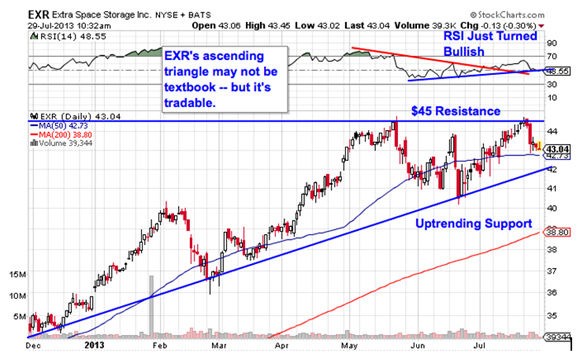
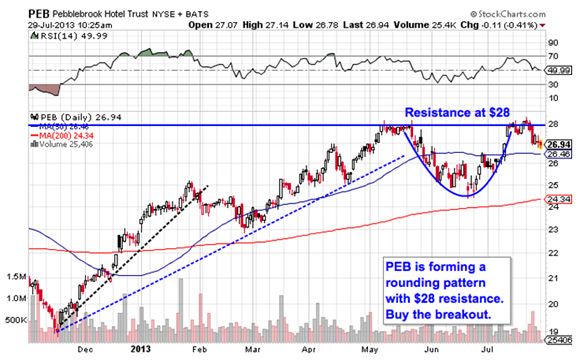
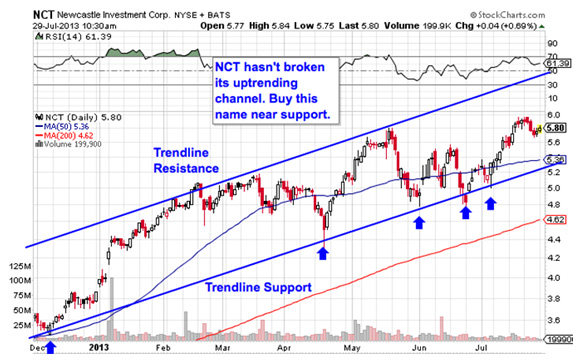
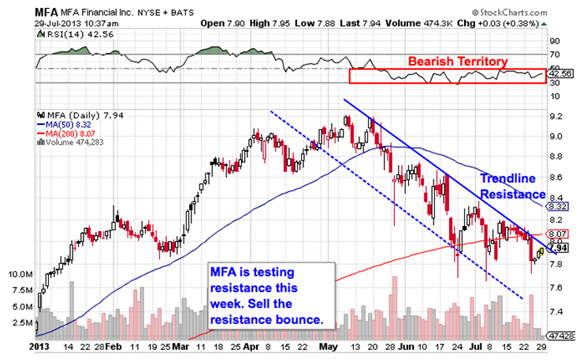
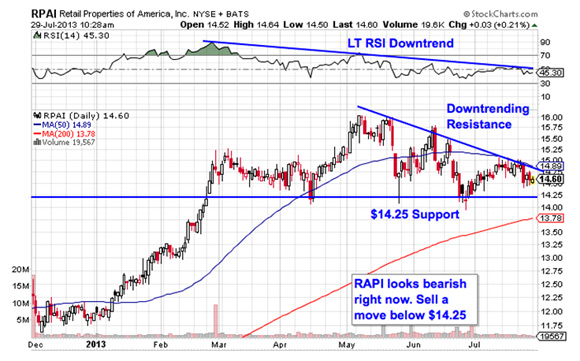


 Bloomberg
Bloomberg 

 The road to! a minimu! m wage
The road to! a minimu! m wage 